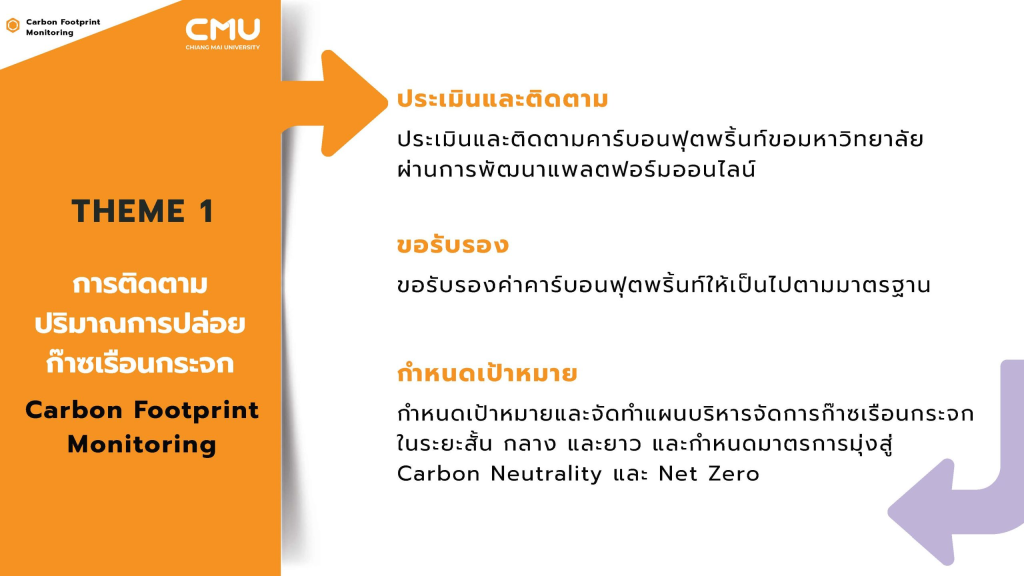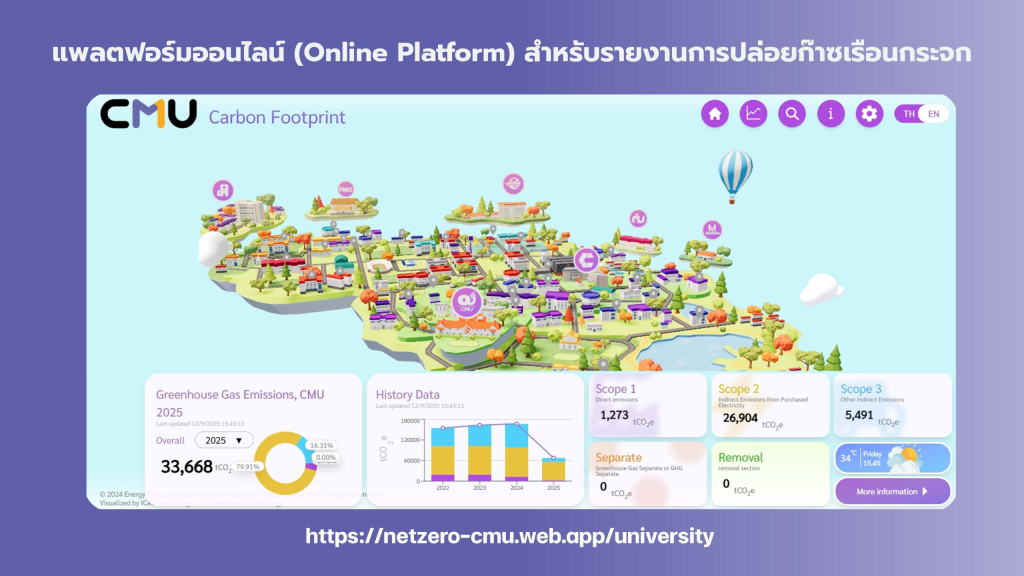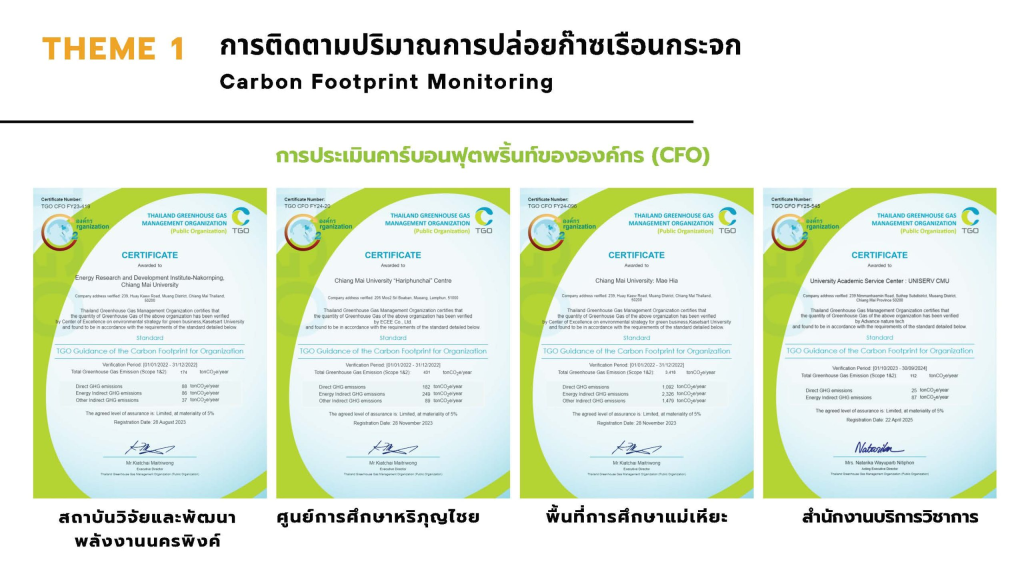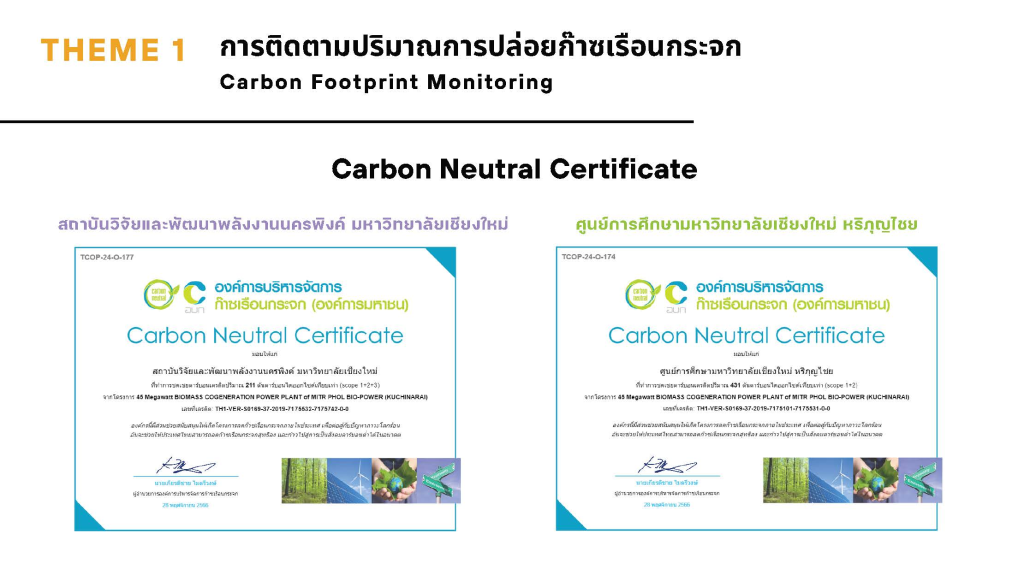Theme 1: Carbon Footprint Monitoring – Tracking greenhouse gas emissions
Chiang Mai University aims to become a “Carbon Neutral University” with five key frameworks, starting with Theme 1: Carbon Footprint Monitoring.
Chiang Mai University (CMU) has announced its commitment to becoming a “Carbon Neutral University” by 2032, one of the university’s key sustainable development goals. To achieve this goal, CMU has established five key frameworks as a systematic and continuous guideline for its operations.
The first framework, or Theme 1: Carbon Footprint Monitoring, is a key foundation for the university’s environmental and energy management efforts to achieve clear and measurable goals.
🔎 Theme 1: Carbon Footprint Monitoring
1. Assessment and Monitoring
Chiang Mai University has developed an online platform for tracking and reporting greenhouse gas emissions (carbon footprint) across all units within the university. This platform enables transparent and up-to-date verification of Scope 1 (Direct Emissions), Scope 2 (Indirect Emissions from electricity use), and Scope 3 (Other Indirect Emissions) emissions data.
Researchers and administrators can use this data to design targeted emission reduction measures to meet the goals of achieving Carbon Neutrality and Net Zero.
2. Certification
To build trust and achieve nationally and internationally recognized standards, CMU has assessed and requested Carbon Footprint for Organization (CFO) certification from the Thailand Greenhouse Gas Management Organization (Public Organization) (TGO).
Currently, several units within the university have received CFO certification, including:
• Energy Research and Development Institute, Nakhon Ping
• Hariphunchai Education Center
• Mae Hia Educational Area
• Academic Services Office
In addition, CMU has received Carbon Neutral Certificate certification, including:
• Energy Research and Development Institute, Nakhon Ping
• Hariphunchai Education Center
This certification confirms that: The university has taken steps to reduce and offset greenhouse gas emissions, achieving carbon neutrality.
3. Target Setting
CMU has developed a greenhouse gas management plan for the short, medium, and long term, with clear indicators covering energy consumption reduction, renewable energy use, resource efficiency improvement, and carbon offset measures. This aims to achieve Carbon Neutrality and Net Zero goals within a timeframe consistent with national and international development goals.
📊 Tangible Results and Achievements
• The CMU Carbon Footprint Online platform displays real-time data, reporting Scope 1, Scope 2, and Scope 3 emissions, presented in an easy-to-understand dashboard.
• Certification from the Thailand Greenhouse Gas Management Organization (TGO)
• Several university departments have received CFO Certificates
• Some departments have already received Carbon Neutral Certificates
• Elevating organizational standards
• Certification enhances the university’s credibility
• Becoming a model for other educational institutions in achieving sustainable environmental management
🌍 CMU as a leader in sustainability
Chiang Mai University is not only a source of academic learning, but also a model for social and environmental development through concrete and continuous operations. Monitoring and assessing the Carbon Footprint is an important first step in the university’s journey towards becoming a “Carbon Neutral University.”
This move reinforces Chiang Mai University’s commitment to being a leader in environmental management among Thai higher education institutions and its readiness to inspire all sectors of society to work together to reduce greenhouse gas emissions for a sustainable future for the planet.
👉 For more information, please visit:
🔗 CMU Carbon Footprint Platform






